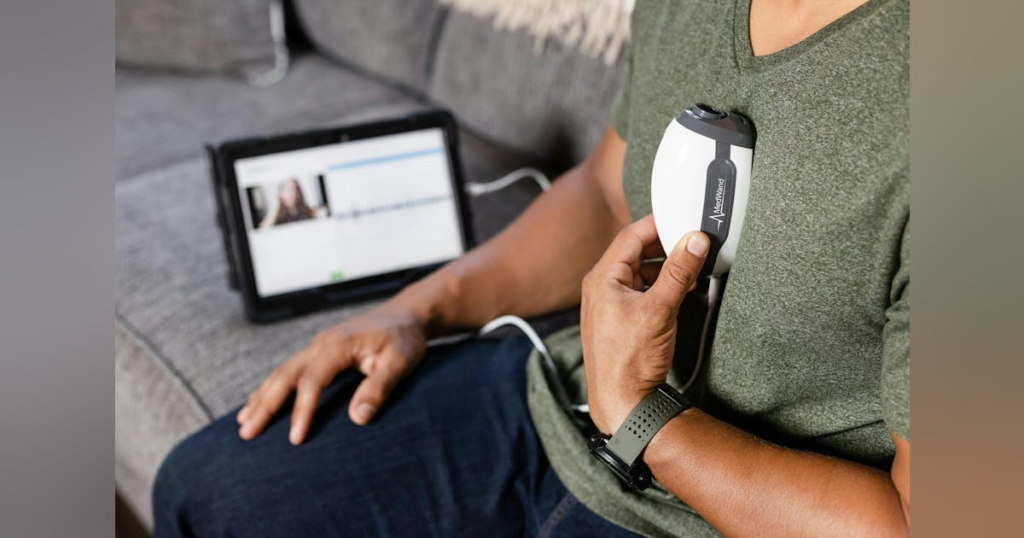To mitigate this issue, most healthcare organizations are integrating telehealth into their care delivery models, but Kurliand says traditional telehealth methods have limitations. Learn what those limitations are and how MedWand, a new cutting-edge technology with the unique ability to enable healthcare providers to conduct comprehensive virtual exams that weren’t previously possible, is revolutionizing telehealth visits.
What is missing from traditional telehealth?
With remote visits, doctors still need to rely on a patient’s medical history and self-reported symptoms, but they want more. They want to hear the heart and lungs, take the patient’s temperature. Until now, doctors have been asking if they could get more details on these vital signs. The answer is, they can’t if they’re relying solely on audio and video.
How does MedWand deal with limitations?
The MedWand is a handheld tool that measures temperature, blood oxygen levels, and pulse rate.
It works like a stethoscope, capturing auscultation of the heart, lungs and abdomen. The high-resolution camera can transmit real-time data to a tablet or computer while examining ear canals, throat and skin conditions. This allows for a more comprehensive virtual exam from the patient’s home or anywhere. Clinicians using the MedWand say they are seeing improved outcomes and helping more patients access treatment.
Hearing that the MedWand allows clinicians to perform comprehensive testing at home brings to mind diagnostic errors and delayed diagnoses, one of ECRI’s top 10 patient safety concerns for 2024. Can the MedWand help?
Absolutely. I have discussed many times why this happens. Many factors may be at play: staffing shortages, physician burnout and fatigue, poor documentation, noise, confusion, lack of access to necessary diagnostic tools, etc. These and other factors can lead to errors and missed diagnoses.
For example, pneumonia is one of the top five diseases that are undiagnosed or diagnosed late, and it is responsible for more than 1 million hospitalizations and 50,000 deaths each year. One thing doctors say about telehealth visits is that patients may report difficulty breathing, feel a little dizzy, or have other vague symptoms, yet they don’t know if they have a cold or something more serious.
With the MedWand, you can listen for crackles, rails, wheezes, or soft sounds passing through a specific lung lobe. If you’re doing a video consultation without auscultation of the lungs, you could miss a lot, as the biggest determining factor is whether the breathing mechanics sound smooth and fluid. If not, refer the patient for imaging or additional testing. On the other hand, if the lung sounds are normal, you can avoid unnecessary testing and expense. The MedWand provides the auscultation and captures all the data in real time.

